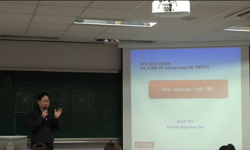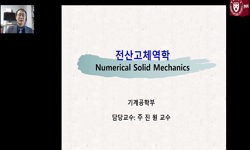조선왕조시대의 족보는 신분제의 유동성에서 기인하고 신분적 배타성에 의거하여 동일계층의 사회집단을 결집하려는 의도로 편찬되었다. 그러나 한편으로 족보 편찬에는 네트워크의 개방...
http://chineseinput.net/에서 pinyin(병음)방식으로 중국어를 변환할 수 있습니다.
변환된 중국어를 복사하여 사용하시면 됩니다.
- 中文 을 입력하시려면 zhongwen을 입력하시고 space를누르시면됩니다.
- 北京 을 입력하시려면 beijing을 입력하시고 space를 누르시면 됩니다.

조선왕조 1600년경 편찬 족보의 계보형태와 특성 -1606년 편찬 『진양하씨세보(晉陽河氏世譜), 만력본(萬曆本))』의 분석을 중심으로 = The form and characteristic of pedigree in the 1600`s genealogy of Joseon Dynasty -focusing on the 『Chinyang Hassi Genealogy (Mallyo edition)』made in 1606
한글로보기부가정보
국문 초록 (Abstract)
조선왕조시대의 족보는 신분제의 유동성에서 기인하고 신분적 배타성에 의거하여 동일계층의 사회집단을 결집하려는 의도로 편찬되었다. 그러나 한편으로 족보 편찬에는 네트워크의 개방성에 기인하여 편찬에 참가하는 가계가 끊임없이 확산되고 교체되는 변화를 겪는다. 말하자면 선별적이고 계층적인 집단화의 배타성과, 혼인과 더불어 무한히 확대되는 네트워크의 개방성이라는 두 가지 서로 다른 원리로 족보가 편찬되었다. 조선시대 족보의 계보형태와 기재사항이 부계혈연집단의 결집을 강화하는 방향으로만 작용하지는 않았다는 것이다. 1600년경에 편찬된 족보들은 그 전과 후에 편찬된 족보들의 계보형태와 그 특성 이 갖는 연속성과 변화를 동시에 보여준다. 특히 『진양하씨세보(만력본)』에서 주목되는 것은 편자의 선조들 가운데 부계남성으로 시작하는 계보를 ``子派``, 부계여성의 배우자인 사위로부터 시작하는 계보를 ``女派``라 구분하여 기록할 뿐 아니라, ``外譜``라고 부르면서 부계남성의 배우자, 妻家의 계보를 수용했다는 점이다. 이전의 족보는 아들과 딸 양쪽으로 이어지는 계보형태를 띠어 ``子女譜``라 불린다. 이 족보는 기본적으로 이전의 ``자녀보`` 형태를 유지하지만, ``자파`` ``여파``와 같은 여러 개의 네트 워크를 설정하고 여기에 더해 편자의 직계선조의 처가쪽 혼인네트워크까지 끌어들여 각 네트워크를 혼인관계로 연결하고 있다는 것이다. 서로 다른 네트워크를 ``링크(link)``시키는 접점을 ``노드(node)``라고 한다. 사위로부터 이어지는 ``女派``의 계보나 처가의 계보인 ``外譜``를 서로 잇는 연결점, 즉 족보에서 네트워크 사이를 링크하는 노드는 夫婦이다. 이전의 족보는 딸과 그의 남편이 연결점의 역할을 했으며, 1600년경부터 그것에 더해 아들과 며느리가 연결점으로 등장했다. 족보편찬의 그러한 원리는 17세기 이후의 족보편찬에도 지속적으로 적용되었다. 부계남성의 계보로 단일화되는 경향이 있는 17세기 이후의 일반적인 족보에는 각부계남성들의 배우자측, 즉 妻父의 기록이 네트워크의 연결점으로 기능했다.
다국어 초록 (Multilingual Abstract)
The genealogy of the Joseon Dynasty, which was derived from the mobility of a caste system, was compiled in order to unite the social group that had the same status according to status exclusionism. However, on the other hand, the compilation of the...
The genealogy of the Joseon Dynasty, which was derived from the mobility of a caste system, was compiled in order to unite the social group that had the same status according to status exclusionism. However, on the other hand, the compilation of the genealogy was also derived from the openness of their network, which caused lineage inclusion that continuously spread and replaced existing networks. In other words, the genealogy was compiled by two different principles, the selective and hierarchical collectivization`s exclusion and the infinitely expanding network`s openness through marriage. Therefore, the pedigree` form and the items recorded not only had the effect of reinforcing the paternal descent group. The genealogies which were compiled around 1600 show the continuity and change in the same time, compared to the genealogy before and after that. In particular, among the compilation of ancestors in the Chinyang Hassi Genealogy (Mallyo edition) ``晉陽河氏世譜(萬曆本)``, the lineage started from paternal males was called Japa ``子派``, the lineage started from the son-in-law of paternal females was called Yopa ``女派``, and the spouse of the paternal males are called Oebo ``外譜``. The genealogies before this which includes both son and daughter`s lineage are called Janyobo ``子女譜``. This genealogy fundamentally not only maintains the form of previous Janyobo ``子女譜``, but also sets up several networks like Japa ``子派``, Yopa ``女派``, and even includes the marrige network of lineal ancestor`s wife, and link these networks with marriage. The point that links the different networks is called a node. Like the node link the Yopa ``女派``lineage which started from the son-in-law and the Oebo ``外譜``lineage of the wife, the node link the network in the genealogy is the couple. In the previous geneology, daughter and her husband works as node, and from 1600 son and his wife became the node too. The link through marriage makes the social network`s openness spread, even after the compilation of the genealogy, the lineages are included through Ch`urok ``追錄`` or Pyolbo ``別譜``. And the principle of genealogy is continuously applied after the 17th century. The genealogy which has an unification trend of paternal line after the 17th century, the record of paternal males` wife`s side functions as a node of network.
동일학술지(권/호) 다른 논문
-
한국전쟁 이후 극장 문화 로컬리티(Locality) -강원도 도시를 중심으로
- 성균관대학교 대동문화연구원
- 위경혜 ( Gyeong Hae Wee )
- 2012
- KCI등재
-
- 성균관대학교 대동문화연구원
- ( Miyajima Hiroshi )
- 2012
- KCI등재
-
- 성균관대학교 대동문화연구원
- 료경륙 ( Ching Liou Liaw )
- 2012
- KCI등재
-
명말 화북종족과 종족의 재구축 -산동 청주 『중수형씨종보(重修邢氏宗譜)』사례를 중심으로
- 성균관대학교 대동문화연구원
- 상건화 ( Jian Hua Chang )
- 2012
- KCI등재




 KCI
KCI KISS
KISS







